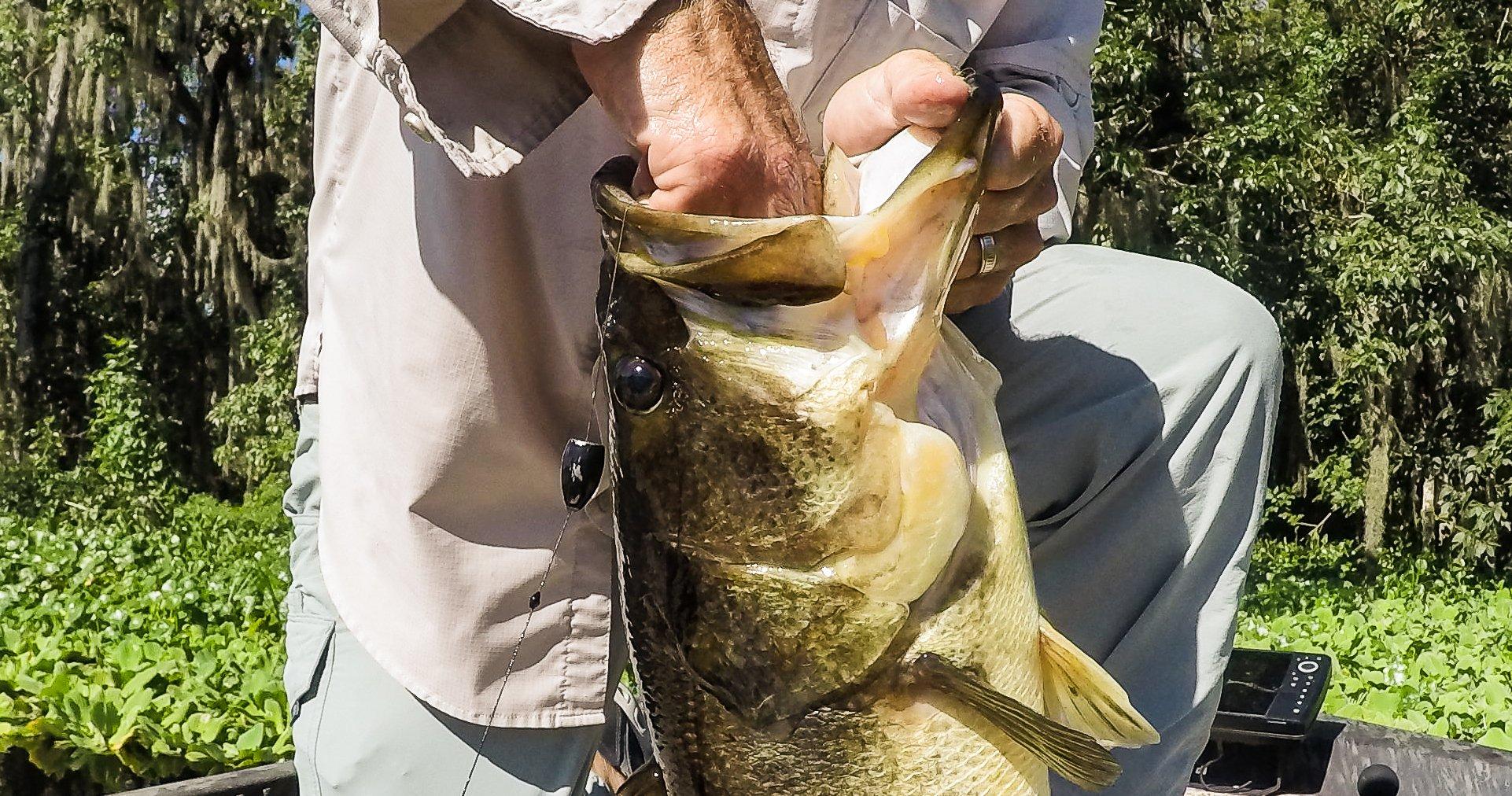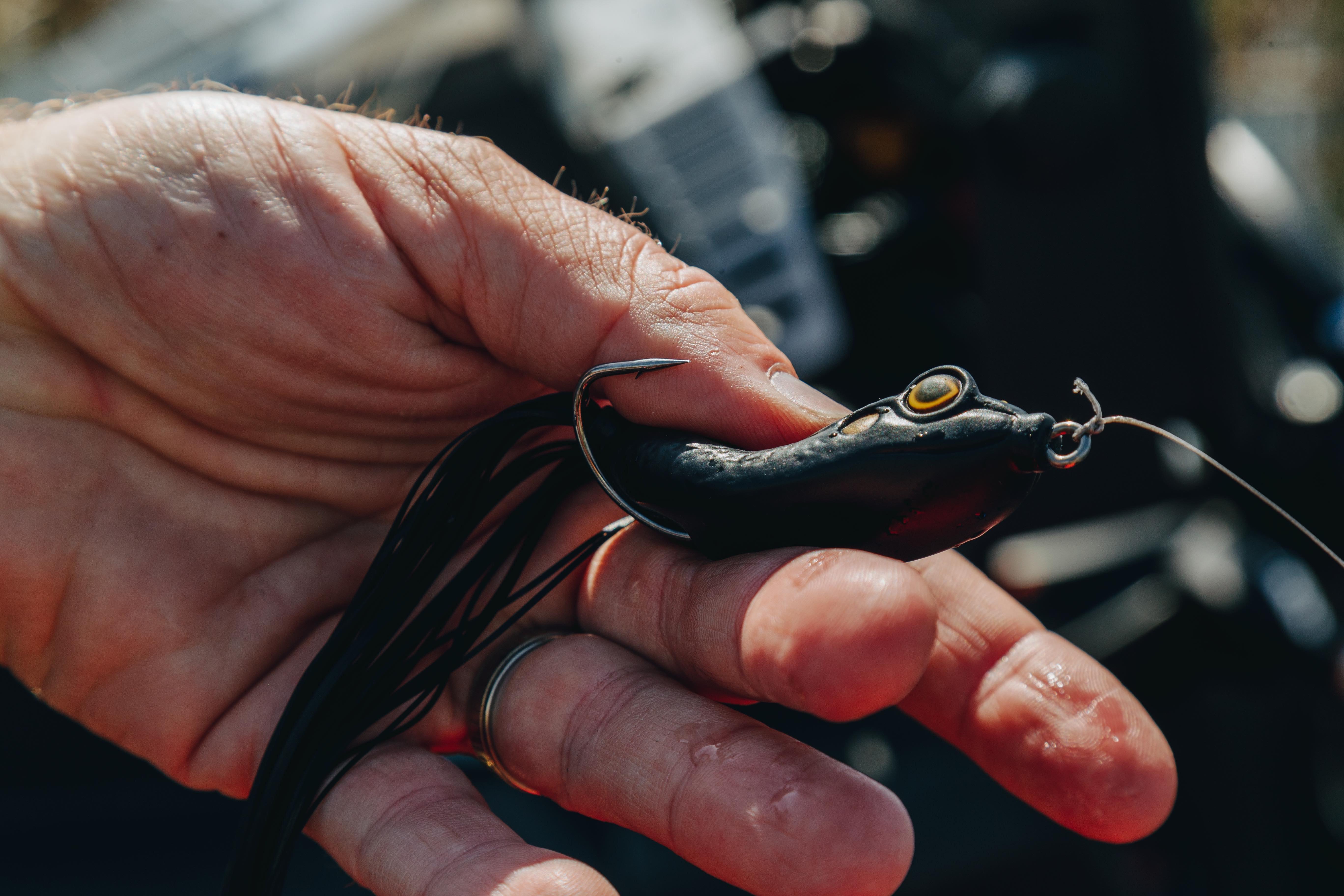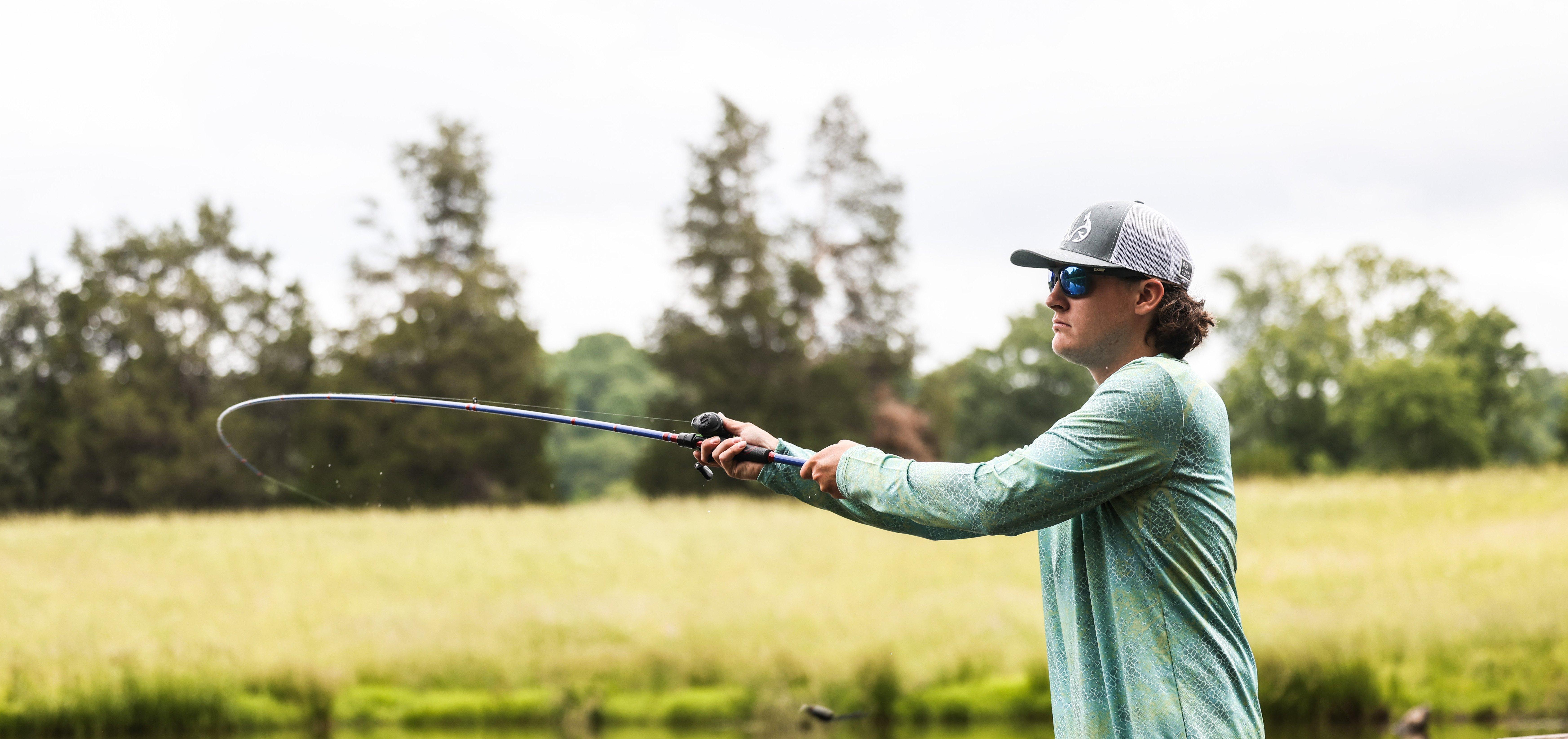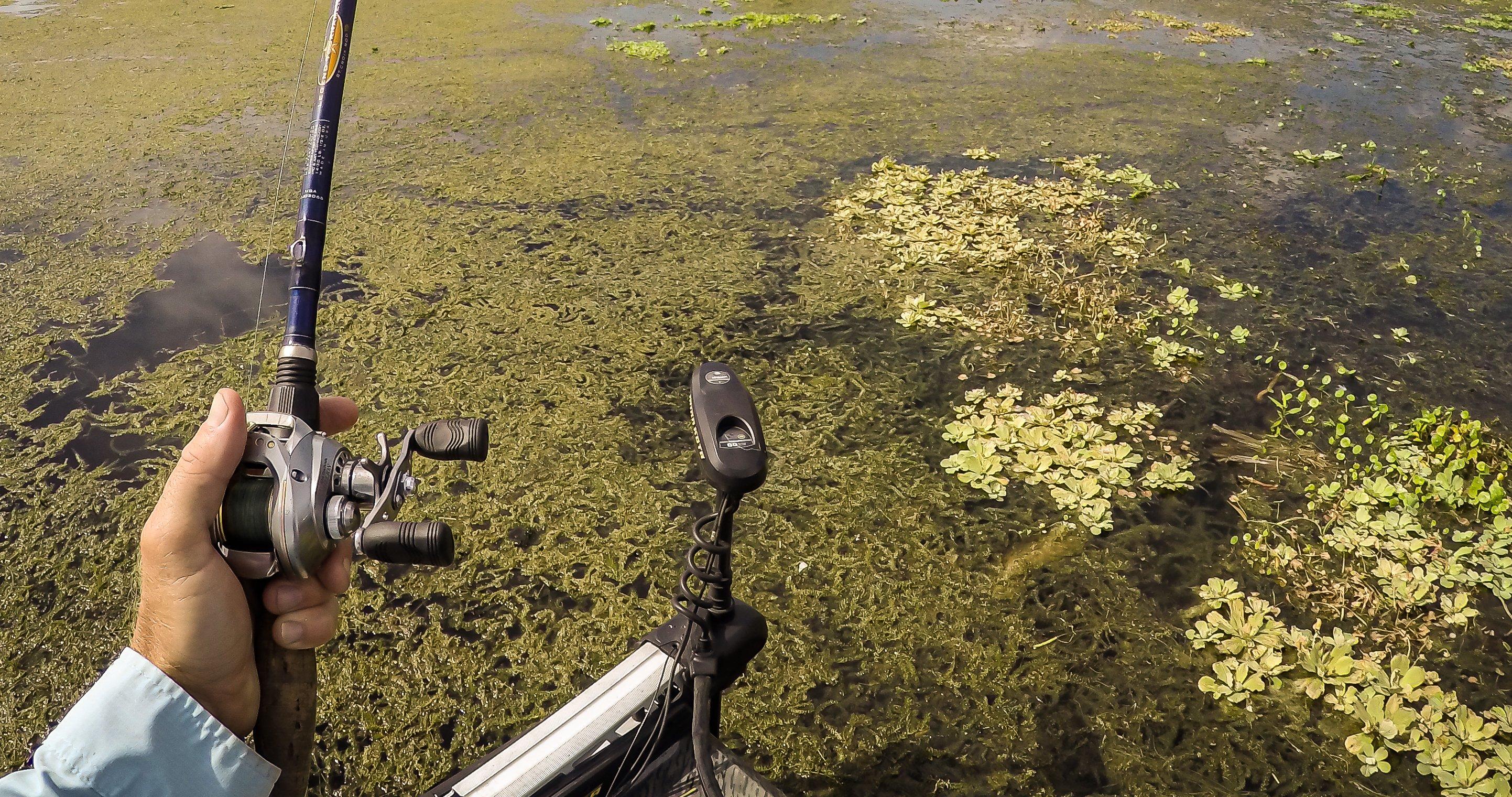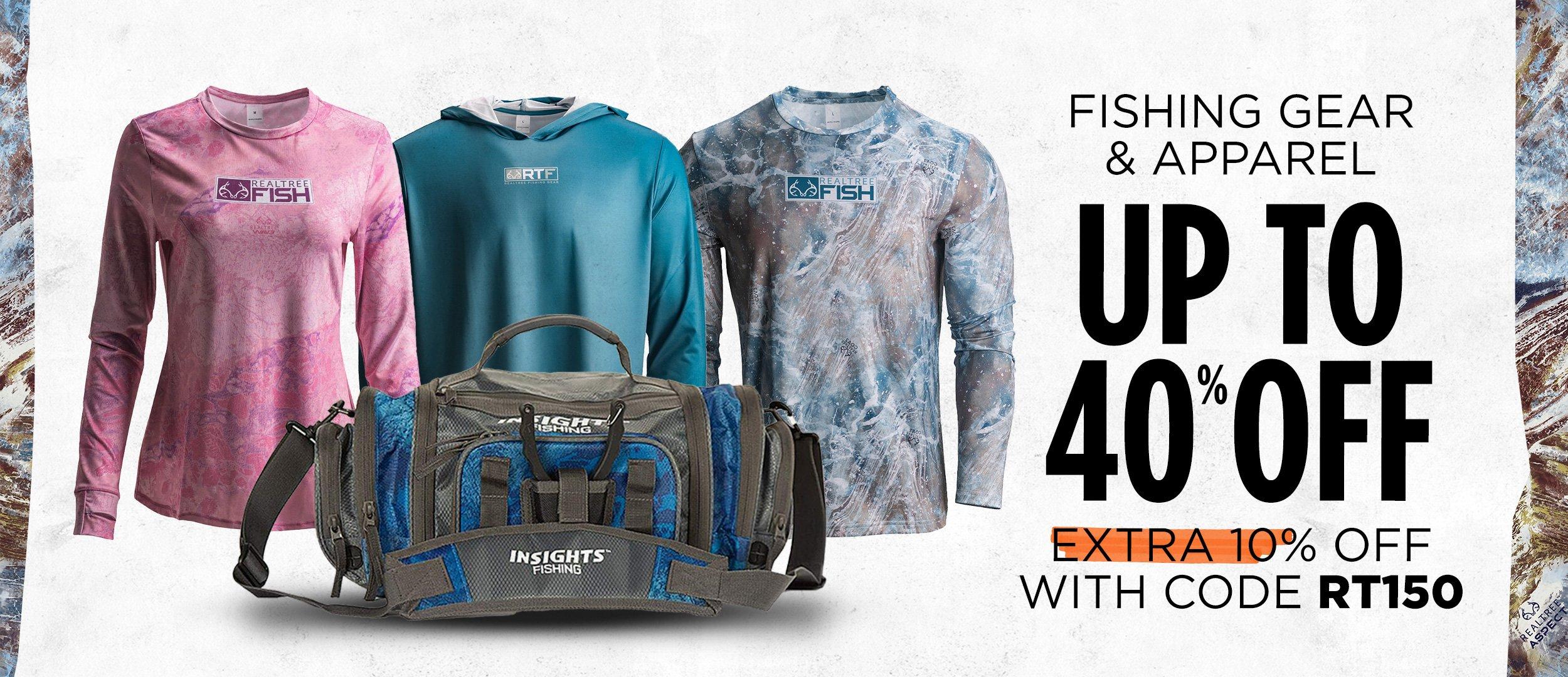The nastiest cover holds the biggest largemouths in the late summer. Here's how to haul them out of it
Slop. Junk. Grass mats. Whatever you call it, the thickest vegetation in the lake often draws the biggest bass. But heavy cover presents a problem: How in the world do you fish this stuff?
Fans of pro bass fishing often watch in awe as the nation's top anglers take incredible stringers from the gnarliest places. Punching mats and frog fishing are the tactics of the day. But what does that mean, and how do you try it yourself?
Let's dig into the details.
Ribbit.
Extreme heavy vegetation prevents fishing with common tactics. Spinners and crankbaits stay fouled up, and even traditional worms and jigs fail to get to the fish. There are two solutions. One: fish on top of the grass. Two: use a rig heavy enough to get down through it.
Let's start on top. In the early 1980s, pro anglers discovered a new application for grandpa's favorite rubber frog lure. It turns out that the best place to throw little Kermit isn't around the lily pads, but across the heaviest weeds in the lake. Matted vegetation forms thick canopies capable of supporting any number of terrestrial and aquatic critters, from mice to birds and, yes, frogs.
Most veteran anglers agree, however, that the hollow body frog lures do little to mimic a croaker. Instead, bass see them as potentially a number of prey times, including bluegills and wounded shad. Regardless, all are gobbled up while struggling across and on top of the weedbeds.
There's more to this technique than just slinging a frog lure out across the grass. First, look for areas where more than one type of vegetation exists. Slimy slop, mixed on top of weeds like hydrilla and milfoil, is the ultimate froggin' spot. The slop shades out some of the grass below, and allows bass more open areas to hunt prey.
It's important to get rigged correctly. Braided line is a must for this technique. I stick to 50-pound Sufix 832; it's my go-to braid for just about everything grass-related. When a big bass hits at the end of a cast, the no-stretch characteristic of braid is a necessity for hauling that fish from the cover. And braid cuts right through vegetation, a big plus. Tie it directly to the frog, no leader needed, and stick to natural, green-colored line.
(Don't Miss: Fishing Drop-Shot Rigs for Big Summer Bass)
Choose the longest rod you're comfortable casting. A long rod picks up tremendously more line on a hookset than a short stick. Moving that line, in turn, moves the fish up and away from trouble. Seven-foot rods should be a starting point, in a heavy power and fast action. Match with a strong baitcasting reel that's capable of picking up line quickly.
The frog itself needs consideration, too. A number of manufacturers make a quality lure; stick only to those with top-of-the-line double hooks. Models by Nories, Spro, and Snag Proof are good choices. Colors are a matter of preference, but know that 90% of the bass caught on a frog lure fall for a black bait, pro-circuit fish included. White can be surprisingly good, while natural frog colors, ironically, often aren't as productive.
While hollow frog lures catch the majority of fish on top of the weeds, a few other topwater baits can be deadly as well. A big, heavy plastic worm, rigged Texas-style but weightless, works well. This old-school tactic has been responsible for some huge Florida bass. Weedless spoons still see some action, as does a specialized lure called the Weed Walker.
Buzz frogs are the more modern versions and are responsible for a bunch of slop fish each year, where the cover has some open spots. Buzz frogs include models like the Zoom Horny Toad and Stanley Ribbit. They're solid plastic like a worm or craw, rigged similar with a wide-gap hook, and cranked in across the surface, producing a gurgling buzz of bubbles. They often trigger reaction strikes, and are effective for active fish.
Look Out Below
Sometimes, bass just won't bust through the slop to grab a bait on top. Hot, sunny afternoons or cold fronts might keep them buried in the cover. That's when it's time to break out the big guns.
Now termed punching mats (but formerly called bombing weeds), the use of giant sinkers to propel plastic baits down through the thickest cover is nothing new. A revolution occurred, however, with the onset of tungsten worm weights in the early 2000s. The smaller size and slicker coating of these sinkers allowed anglers to use heavier weights with smaller profiles, which made it all the easier to get lures down through the slop canopy.
Here, we're starting with 1 ounce in weight. Truthfully, that size is ideal about 80% of the time. On occasion, though, weights of up to 2 ounces are needed to penetrate the thickest mats.
In any case, the best setup includes a specialized long rod specifically designed for punching. I use a model that's 8 feet long and was included in the design team of this stick for St. Croix Rods. I get daily punching practice on my prime Florida home waters. The rod must be heavy and powerful, but should include a bit of flex in the mid-section. This will allow you to better hook and hold a fish down below the thickest grass. Again, choose a powerful baitcaster and spool it with 50- to 65-pound braid.
(Don't Miss: Why You Suck at Throwing a Baitcaster)
The basic plastic rig goes like this: start with a rubber sinker-stopper (these are sometimes labeled bobber stoppers, too). Next comes the big sinker, then a straight-shanked, heavy cover hook. I use the VMC Heavy-Duty Flipping Hook in 4/0 size, but there are a bunch of heavy, quality models out there. Regardless, it's important to tie this hook on your braided line using a snell knot. It's super-easy to do once you learn it, and the snell knot produces the highest ratio of quality hook-ups when punching heavy cover, as the hook pops up into the top of the mouth of the bass. Believe me, I've done the field testing.
Once rigged up, choose a plastic bait that's short and compact, free of many tentacles or tails. The Sweet Beaver is the original punch bait; Missile Bait's D-Bomb is also a favorite. Other quality choices include the Zoom Z-Hog, Z-Man GOAT, and Berkley Pit Boss.
More than Plunking Around
The punching technique should be basic. Toss it in, hop it around, right? Not so much. When I first began refining my technique here in Florida, I fished with two renowned punching experts and was astonished at how many more bites they generated than me, in the same boat with the same rig tied to my line.
I later learned that punching is an artform requiring a trained eye and sense of feel. First, it's best to really examine the cover above the water before taking the plunge. A good spot to flip can almost always be identified before releasing the bait. Anywhere two types of vegetation mix is worth a try. And the rogue bass of the neighborhood are almost always drawn in to where the cover is thickest, tallest, highest above the water, pushed in or chopped up.
It's important to understand that your first cast is the most important, as it takes the bass by surprise and generates a reaction. Subsequent bombs often just spook fish. So, when approaching a good-looking piece of cover, go right for the best spot immediately.
Next comes the feel. When you plunk a 1-ounce weight time after time, up and down, in and out, it gets monotonous. But then, suddenly, something feels slightly different in the fall of the lure. You pause for a second, and feel for the tell-tale thump of a bass, or even just a bit of pressure.
Too late. He gone.
Nowhere is the old adage more true: hooksets are free.
Not surprisingly, bass aren't fond of holding a giant tungsten weight in their mouth. Often, they just pop a punch rig and then reject it in seconds. In addition, fishing the slop often compromises our sense of feel because of all the gunk that gets in the way. In the end, newcomers miss a lot of bites simply due to second-guessing.
Nowhere is the old adage more true: hooksets are free. But in this case, just lean back into the fish. No hard snap or crossing their eyes. A firm sweep will catch more fish than anything when punching, as it allows the long rod and big hook to work together, without forcing any slack in the line. Quick: was that bite? Don't hesitate. Lean back and find out.
Frogging and punching are two heavy-handed techniques that quickly became personal favorites for me. The average size of a bass caught on these methods is larger than just about any other, and the techniques target fish that are often left alone by the masses. This summer, grab your heaviest gear and enter the jungle. You won't be disappointed.
(Don't Miss: The 3 Best Lures for Catching a 10-Pound Bass)


